Want a heads up when a new story drops? Subscribe here.
The love for sports is a universal passion shared by most people in the world. Sports have managed to bring people together for centuries. However, the events of 2020 created unprecedented challenges for the sports & entertainment industries and dared the creative minds of marketers to think of ways that redefined brands’ social interactions with users.
With most live events canceled, online social channels were challenged to not only support the teams’ messaging but deliver engaging and exciting experiences. Replacing traditional stadium events, be it temporary, is a difficult task. As restrictions for in-person attendance likely to stick for the foreseeable future, there are a few marketing trends to impact sports & entertainment in 2022.
Table of Contents
1. Influencer Strategies
Engaging audiences in any business and platform is about building trust and genuine connections. Social media influencers can help you reach audiences authentically and without being too pushy.
One way sports influencer marketing works is through star athletes who gain a mass following on social media. Soccer players are among the most popular sports influencers with followers reaching hundreds of millions. NBA players are another example of how sports personalities become trustworthy content creators. They’re able to engage their fans with their unique voices and build a fierce follower base by boosting the popularity of the league.
In this collaboration post, Becky Sauerbrunn– the new captain of the US Women’s National Soccer Team, shares a personal story that is meant to inspire people to work through hardships and promotes Adidas as a brand that offers support in the process.
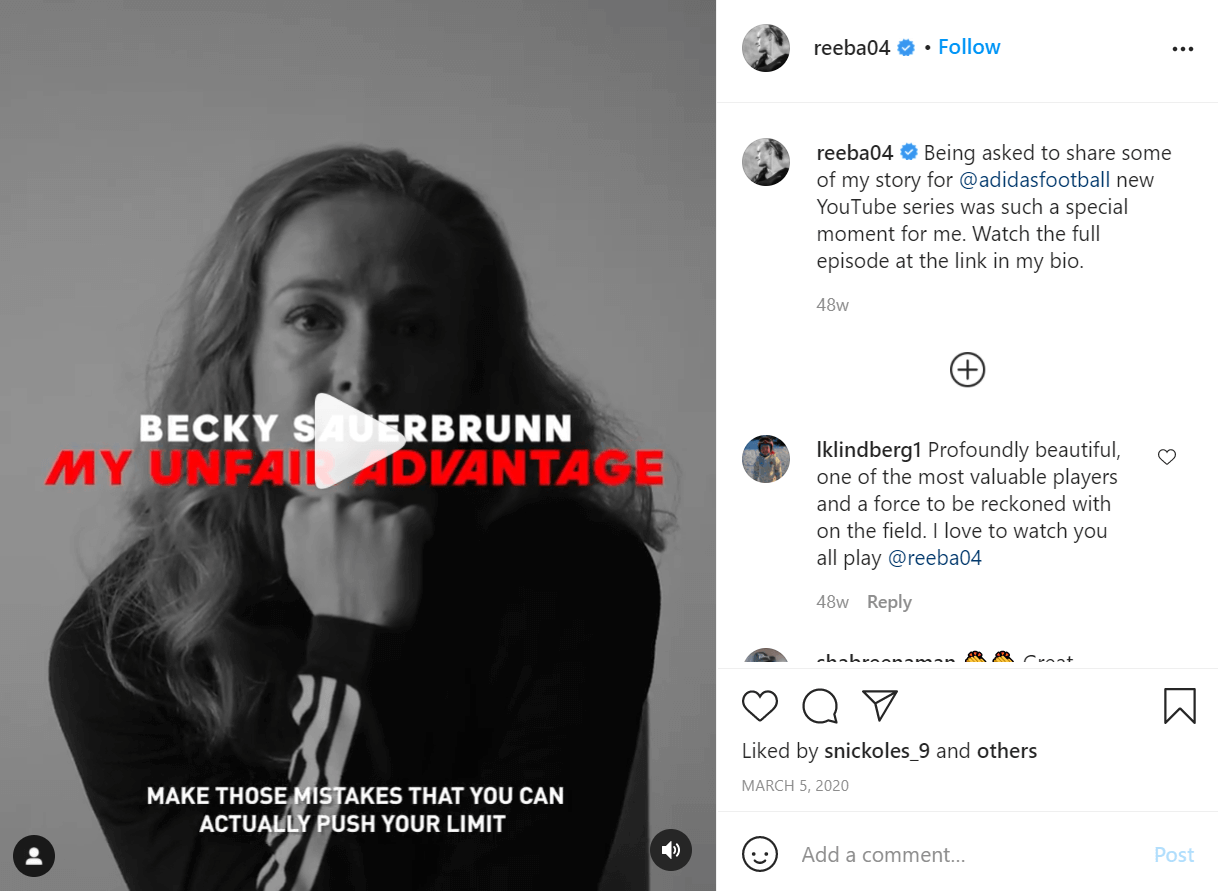
Influencer marketing also works with people who don’t have a large follower base but the right type of audience. Nano and micro-influencers have a highly engaged audience that pays close attention to the content and are likely to be moved by the influencer’s message. Plus, these influencers are easier to work and communicate with.
Look at KT Tape, whom we helped achieve a 200% increase in FB and IG followers within 12 months through content marketing. Their social posts regularly show collaboration with influencers with big names in sports such as Olympic-level athletes. Engaging with nano and micro-influencers helps the brand reach a more close-knit community.
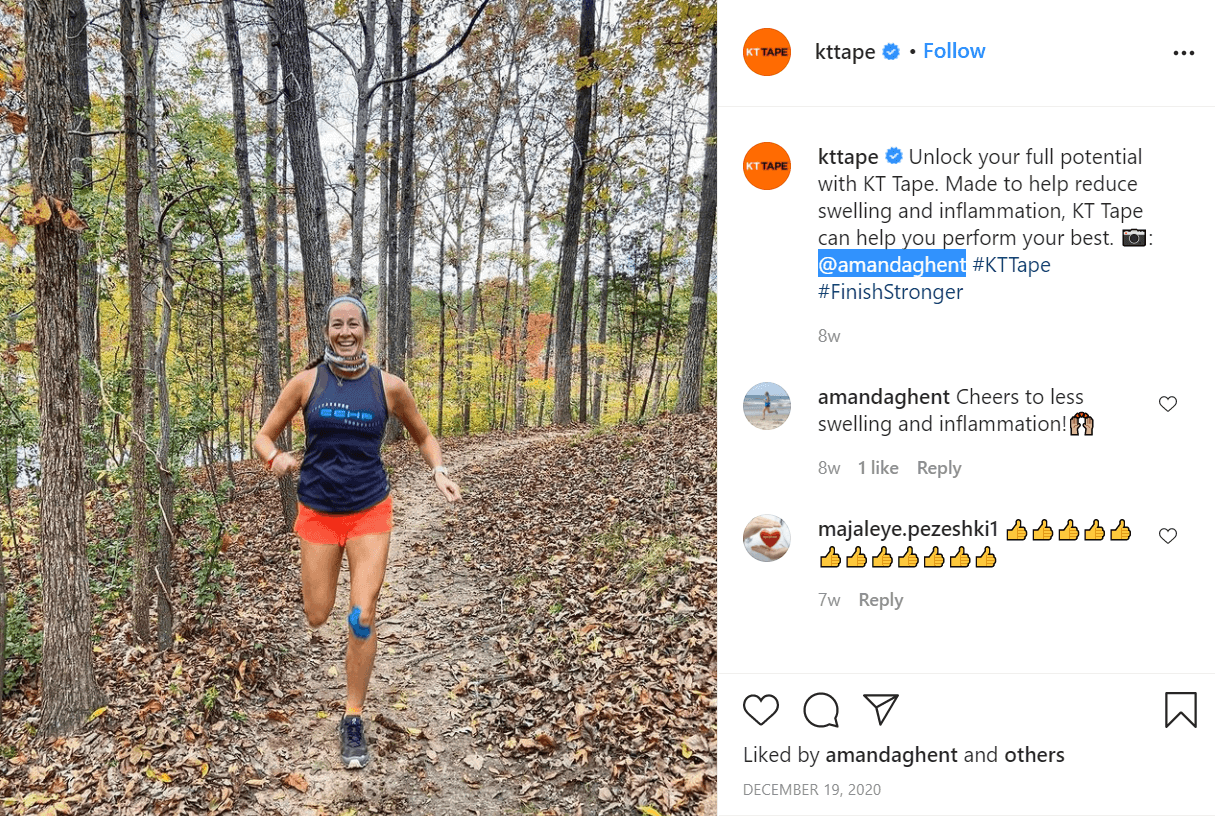

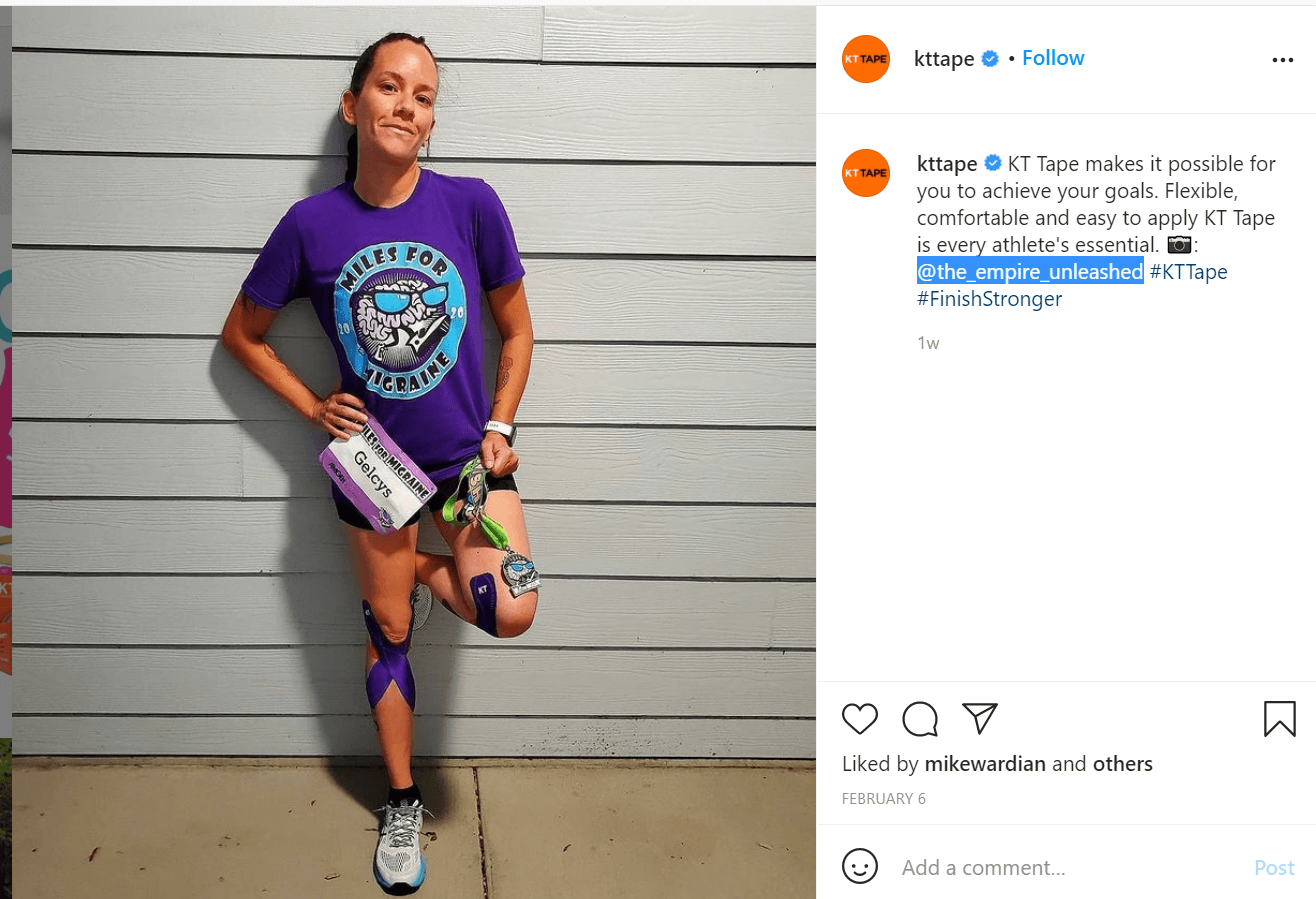
Luke Worthington is another example. A micro-influencer working in collaboration with Nike. His follower base is a bit over 62k but his engagement rate is 5% which is higher than the average of 2.15% in his followers’ size group. He is clearly resonating with his core audience and Nike has seized the opportunity to collaborate with him and direct attention to their inspirational brand.
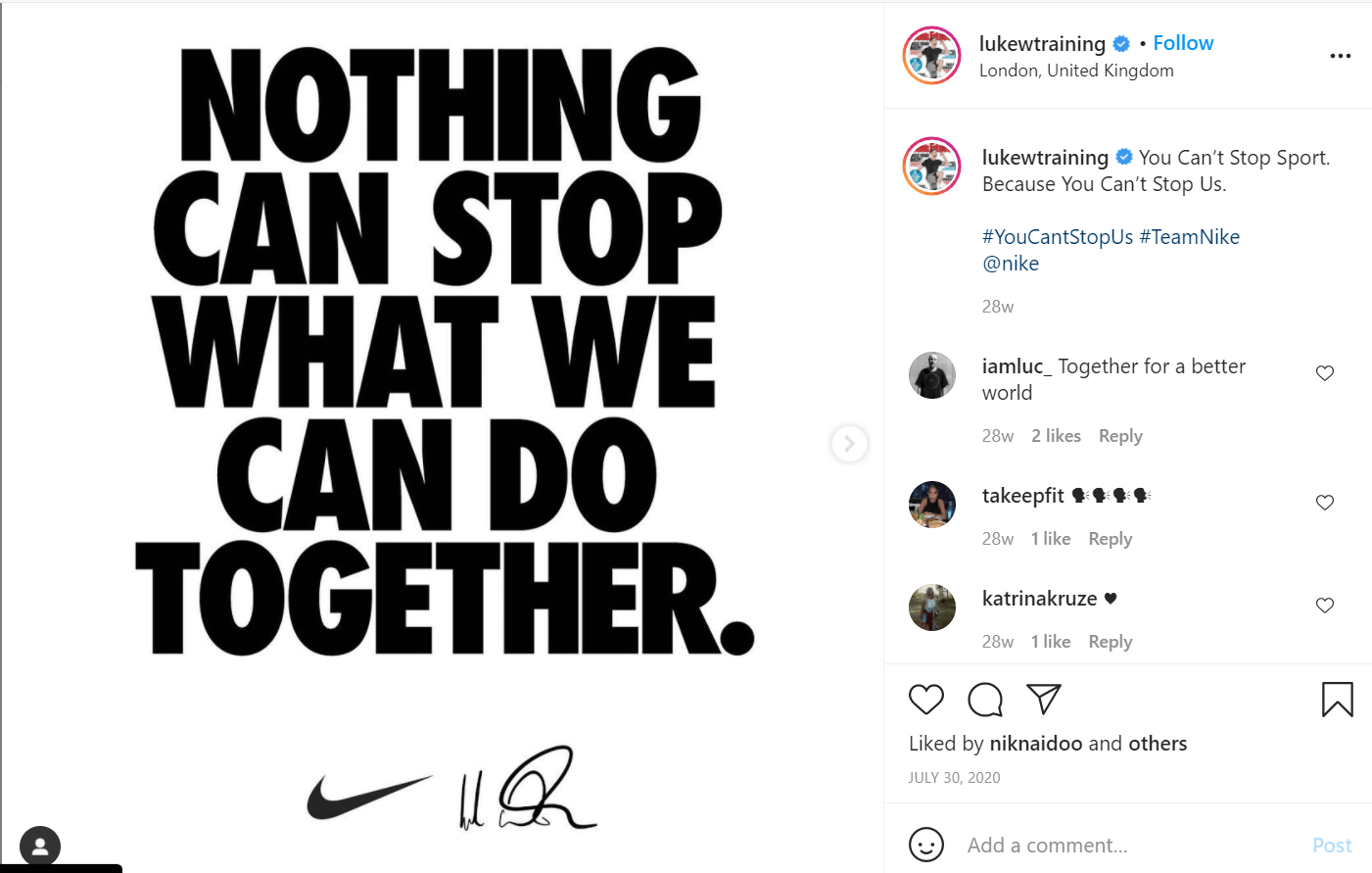
Consider your options when coming up with your influencer strategy: would you rely on affiliate programs and brand ambassadors, or are guest posting, and co-creating content better choices for your brand? Collaborating with influencers can help you increase brand awareness, start a meaningful conversations around brand values, boost sales, and expand customer bases. A win-win for all.
2. Build Fans Rapport with Authenticity and Relevance
Building rapport with fans and followers requires sports & entertainment organizations to focus on providing answers to user challenges in a way that shows a genuine desire to connect and help.
Trustability, in times of a global pandemic, means providing guarantees for physical safety, emotional support, financial consideration, and data protection.
In their social messaging, sports organizations need to answer the questions:
– How will you ensure fans’ safety in physical locations, stadiums and theatres?
– How will you safeguard emotional needs?
– How will you adapt to meet fans’ financial challenges?
– How will you protect fans’ personal data online?
Wembley stadium team, for instance, has shared how their concern for people’s health and safety pushes them to actively support Covid-19 vaccination processes.
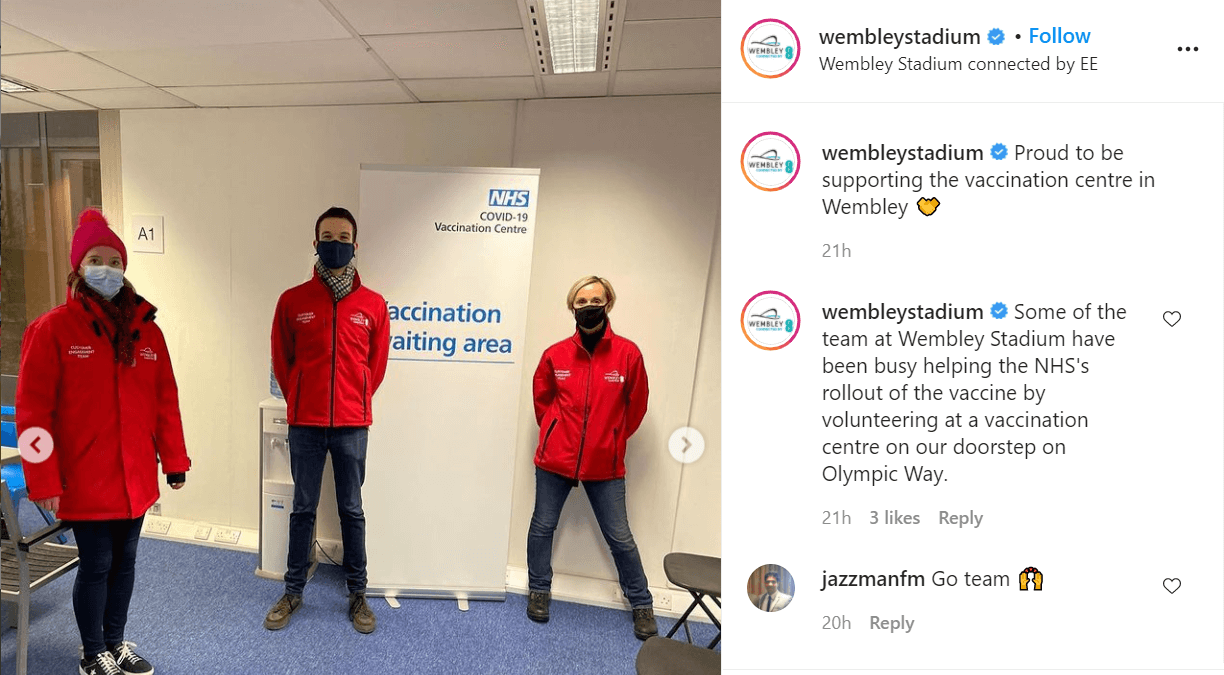
The Los Angeles Rams, on the other hand, show gratitude towards their fan base with an Instagram spotlight post. These posts help demonstrate the emotional bonds teams help create within communities.

To truly connect and maximize fan engagement, sports brands have to understand their fanbase. Segmenting fan bases helps strategically target casual fans from fanatics and engage accordingly in social media. Casual fans might not like to be bombarded daily with content, while sports fanatics might want to stay on top of all the news. It comes down to finding out who your audience is and what the optimal frequency of social media interactions should be.
One thing is certain, more than 60% of fans like to have a year-round-experience which makes them engage more with the team. And 55% of them are more likely to purchase tickets in the future. It’s important for sports organizations to keep in touch with fans even off-season.
Let fans get a glimpse into the lives of the people who make up the team to connect with them and create communities around your organization. Sports leagues and athletes should focus on interaction rather than broadcasting.
In addition, athletes with a strong presence on social media tend to maximize fan engagement and promote the leagues. Leveraging insights into personal lives, live-streams, e-sports, and interviews is a great way to boost fan engagement.
Another important issue to address is how 2020 has financially impacted fans and find ways to alleviate those obstacles. Showing support with content that is free to enjoy so your fans will continue to engage and perhaps consider subscribing to a paid streaming service later on. Social media channels will help spread the word and keep your fans alert to what you’ll have to say next.
And last but not least consider how continuous digitalization impacts the safety of data. A great way to build trust with fans is to use social media and address issues concerning the protection of personal information and the measures your organization takes to safeguard data.
3. Giveaways
Social media giveaways can help boost brand awareness, engagement, and even sales. They can also be used to point attention to important messages you want to share with fans. Giveaways will help you stay relevant even when sports season is over.
To take the most of this type of social post make sure you have your objective in mind, choose the most appropriate platform to promote your giveaway on, and choose the right price. People are in for the win, so your reward has to not only be related to your brand but appealing enough to provoke engagement.
Here, KT Tape shows how a holiday giveaway can help boost engagement. This Valentine’s Day post prompted users to like, tag & follow for the chance to win KT product for free. The three calls to action increase chances to grow the fan base, get in front of a new audience, and increase their chances to rank at the top of Instagram’s feed.
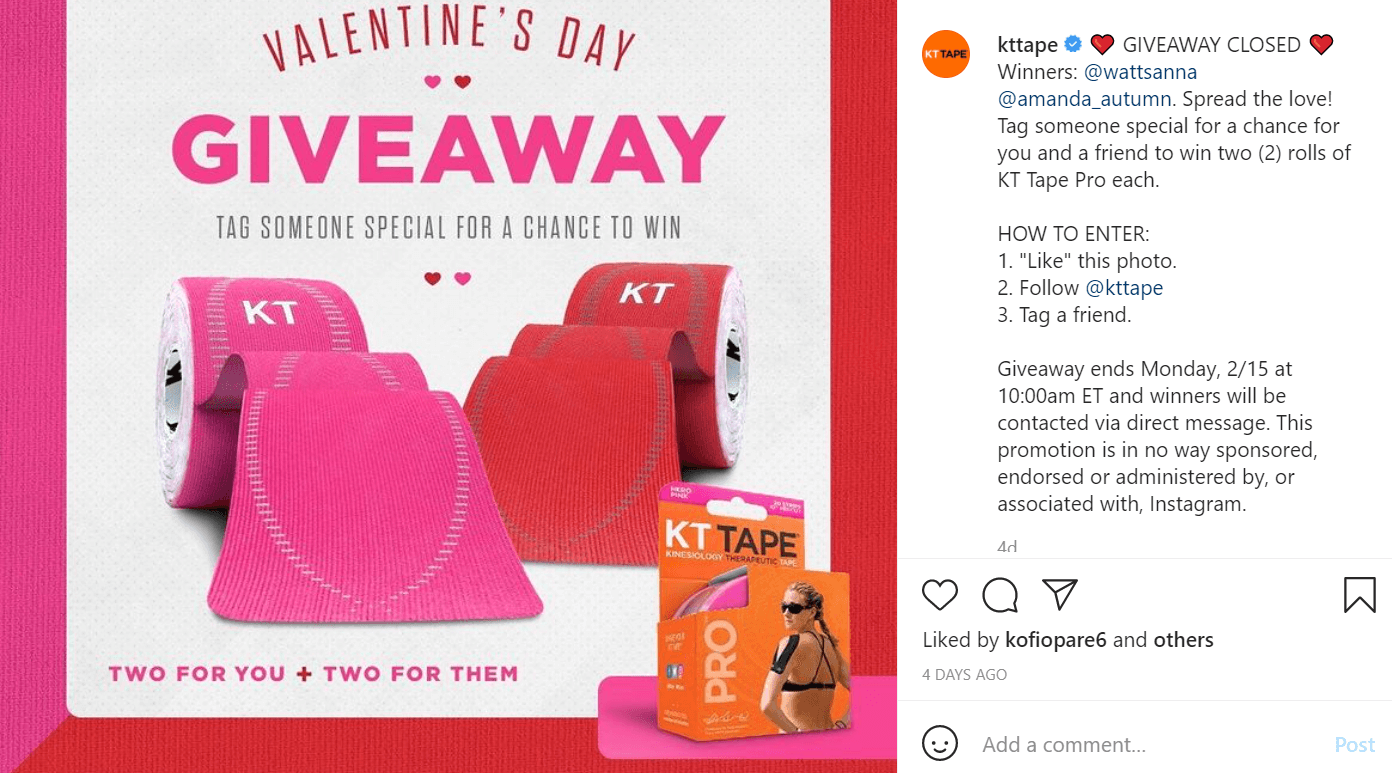
One more great way to boost engagement to your organization is to reward not participants directly but charitable causes they support. Sincere generosity demonstrated through a cause-driven culture promotes values that focus on more than revenue, and sales — and sports fans appreciate that.
4. Look for Cross Collaboration Partnerships to Create New Marketing Channels
In 2020 sports leagues and brands pushed further the boundaries of traditional marketing and looked for partnerships that could keep their fans engaged while stadiums were closed.
The demand for versatile content will continue to grow in 2022 and sports and entertainment organizations will need to offer a wider range of content options for fans. Novel partnerships and new marketing channels will be required to maintain attention spans and brand loyalty. Think how videos, virtual games, e-sports, podcasts, and why not even music can benefit your organization and add them to your marketing strategy.
To improve retention, brands will also need to address different users’ preferences with tailored and personalized experiences and services, along with options for tiered pricing. 2020 pushed users to experiment with different entertainment options and now social channels are not only delivering information but playing a part in the entertainment experience itself. Sports organizations need to be agile and ready to experiment themselves.
The New England Patriots, in collaboration with Zudy Apps, run a podcast type of series called “Locker Room Sound”, giving fans insight into what’s happening behind the scenes. This is a particularly useful tool for connecting with fans in times of live-events restrictions.
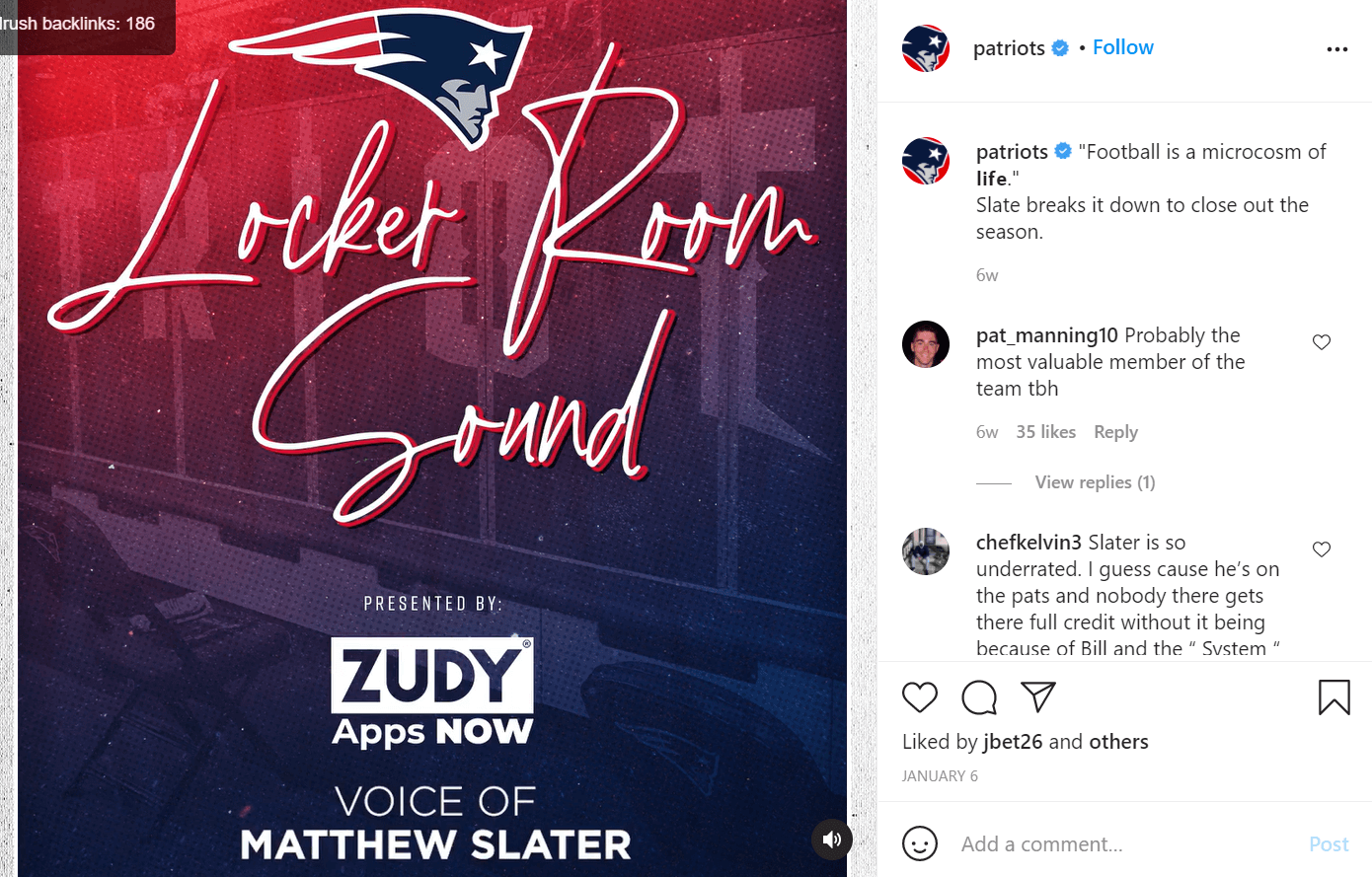
Partnerships that support environmental or social causes further establish sports brands as active players in the pursuit of a better society. That attracts attention from users who are no longer expecting to be sold products and services but rather participate in positive experiences.
Adidas for example collaborated with Allbirds – a sustainable footwear company from New Zealand, to create sports shoes with the lowest carbon footprint possible. Leaving aside the marvelous project, the collaboration helped Allbirds reach the massive fan base of Adidas and in return gave Adidas access to a new audience among the environmentally-friendly community.
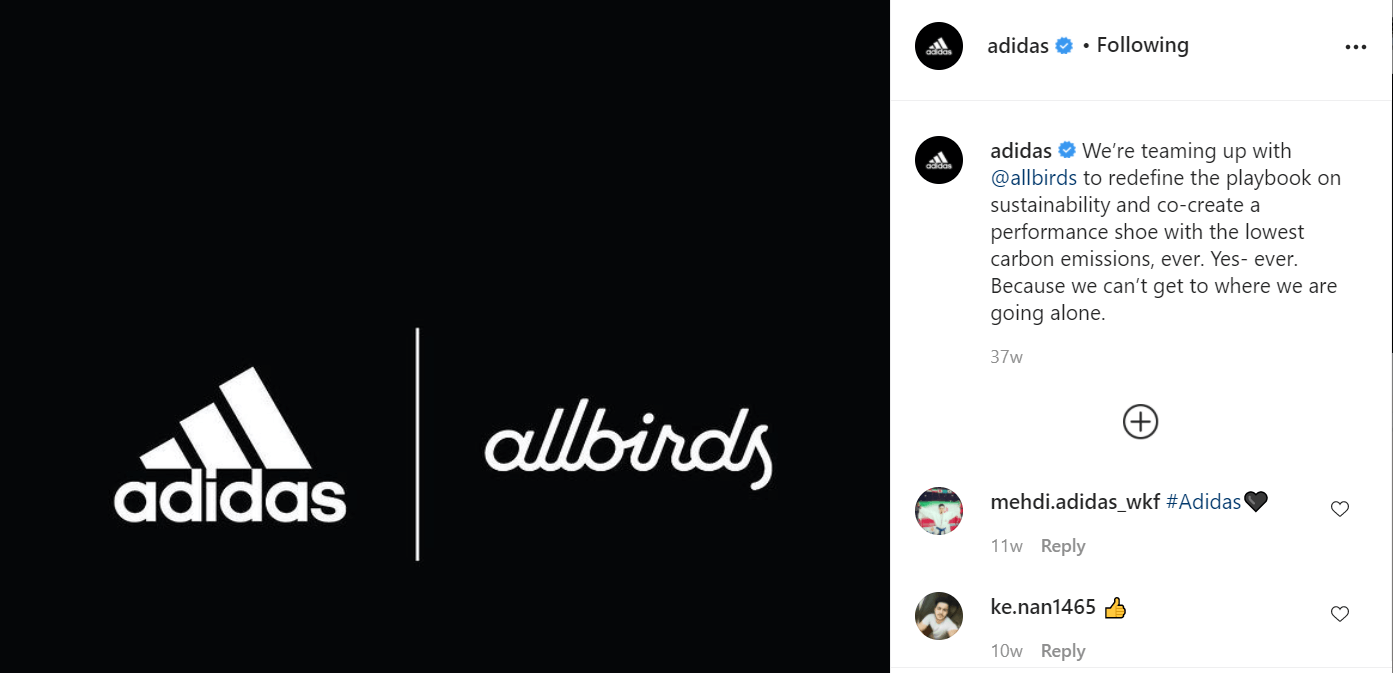
5. Reshape Fan Experience – Adapt to New Generational Demands
In the sports and entertainment industry, change is part of the game and so are adjustments of marketing strategies to incorporate the demands of new generations and audiences.
Fans today expect brands to be more involved and clearly communicate about who they are and what values they support. Brands need to establish a presence and increase the accessibility in communities they’ve previously overlooked.
Nike worked with WNBA to create the campaign – “WIN-Women in Nike” and used Instagram to shine a light on the co-created program that supports former WNBA players in their careers after leaving the court.
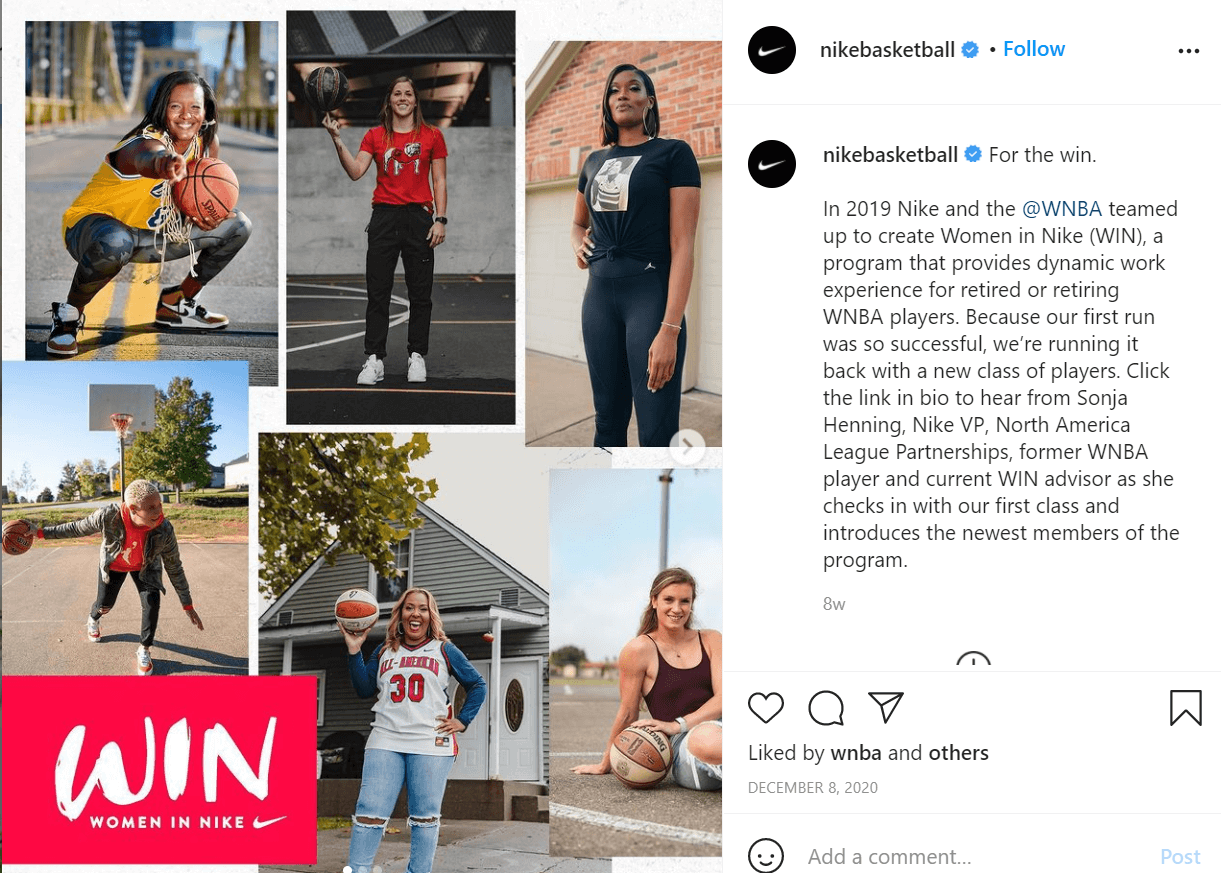
Nike collaboration with Fitriya Mohamed– founder and outspoken ambassador of the Muslim Women’s Summer Basketball League, is another great example of breaking stereotypes and reaching a whole new audience that’s hardly been considered previously.
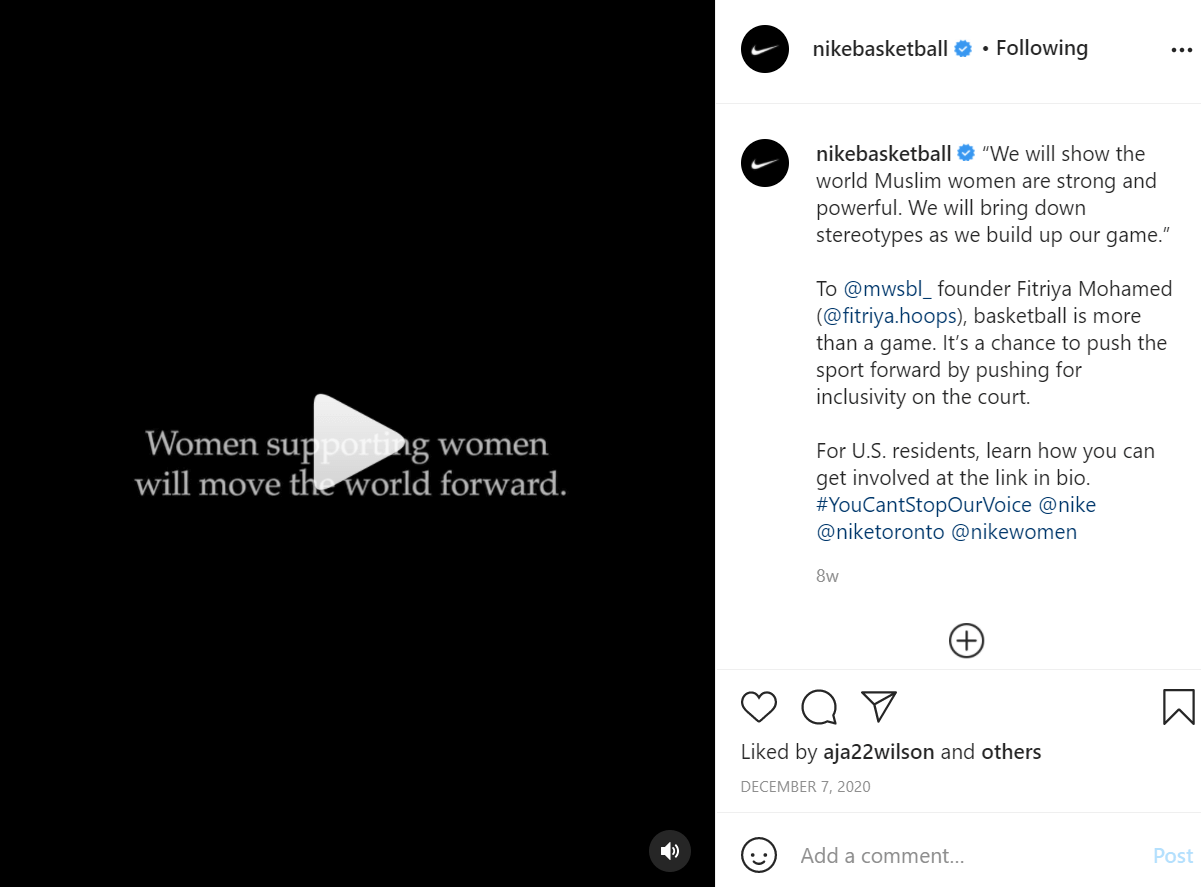
Bayern Munich soccer team, on the other hand, took the opportunity to show IG followers their support of the Christopher Street Day parade (Berlin Pride), which got canceled in 2020, by lighting their entire stadium in rainbow colors.
Their support for campaigns against homophobia, discrimination, and exclusion sets an example and attracts the attention of an audience who they might not have been able to reach previously.
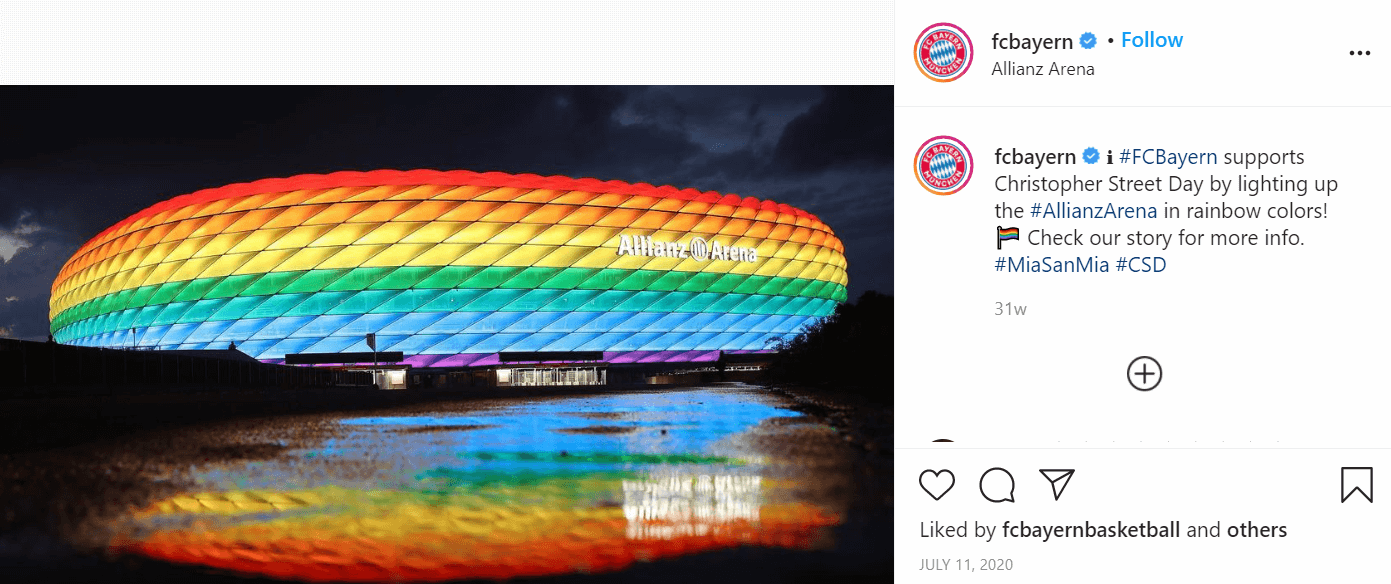
It’s all about the multichannel social media approach and communicating stories that build relationships and offer experiences. Younger generations are increasingly interested in authenticity and communities above the idea of being “sold to”. Youtube and Twitch are preferred channels among millennials, and the Gen-Z generation, as they connect users in real-time through live-streams and chats.
Sports brands have the opportunity to lean into more creative and interactive ways of communicating their message. The “watch party” for example, gets people to watch videos on their favorite social media channel together – creating an atmosphere of togetherness in times when physical contact might still be restricted. According to statistics, by June 2020 almost one-fifth of adult Americans have participated in at least one “watch party”.
Sports organizations should prioritize investment in digital infrastructure, people, and processes relating to fan data to help them build a better understanding of their audience and what will work for them.
6. Stand for a Cause – Engage in Social Activism
Combining new partnerships with social activism is probably the best way to go when raising awareness and boosting any brand’s engagement rates .
Lakers do an outstanding job at supporting small communities and reaching new audiences.
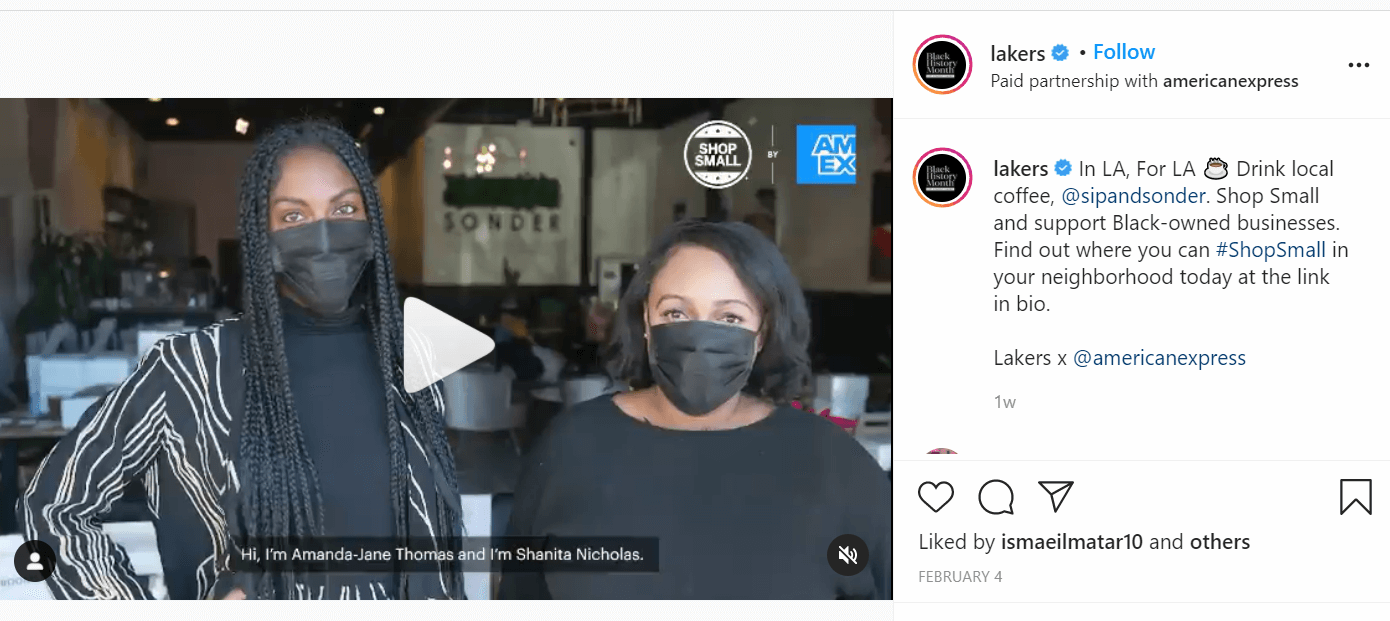
Sports organizations can consider giving voice to social justice causes they stand behind, incorporating them in their mission, culture, and social media messaging.
Organizations in the sports industry can ensure to stay on top of societal shifts and prepare to address them quickly. Many athletes are already actively involved in social justice causes- sports brands have to simply amplify their voices.
The women’s tennis star and social justice advocate Naomi Osaka is a great example of how a prime athlete uses social media channels to cast light on difficult but important issues.
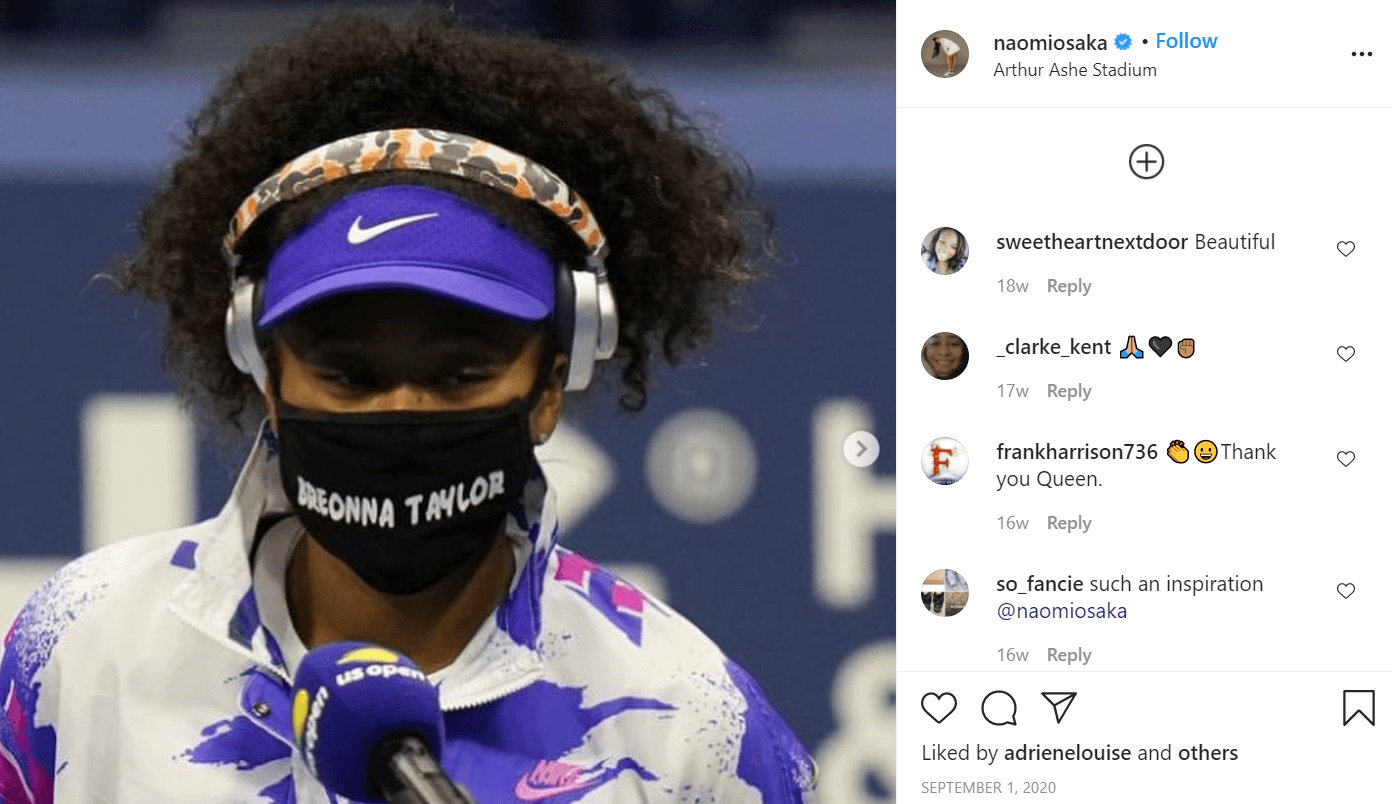
7. Invest in Augmented and Virtual Reality Technologies
Augmented and virtual reality technologies are key to further transforming the sports industry. They help create a safe space where excitement and anticipation, similar to live games, is experienced.
E-sport is rising in popularity and successfully boosting engagement. The NBA has adapted quite well to the trend. For example, last year the Phoenix Suns played the rest of its season on NBA2K and streamed it on Twitch – offering fans a way to enjoy the game in a different format. Their first stream – a game against the Dallas Mavericks collected 221, 000 views.
NBA2K’s marketing team is successfully using Instagram to promote games and merchandise while celebrating important social events. Their average engagement rate is about 3.6% with over 16K likes and over 2.5K comments on posts. Pretty impressive for an emerging media broadcasting channel.
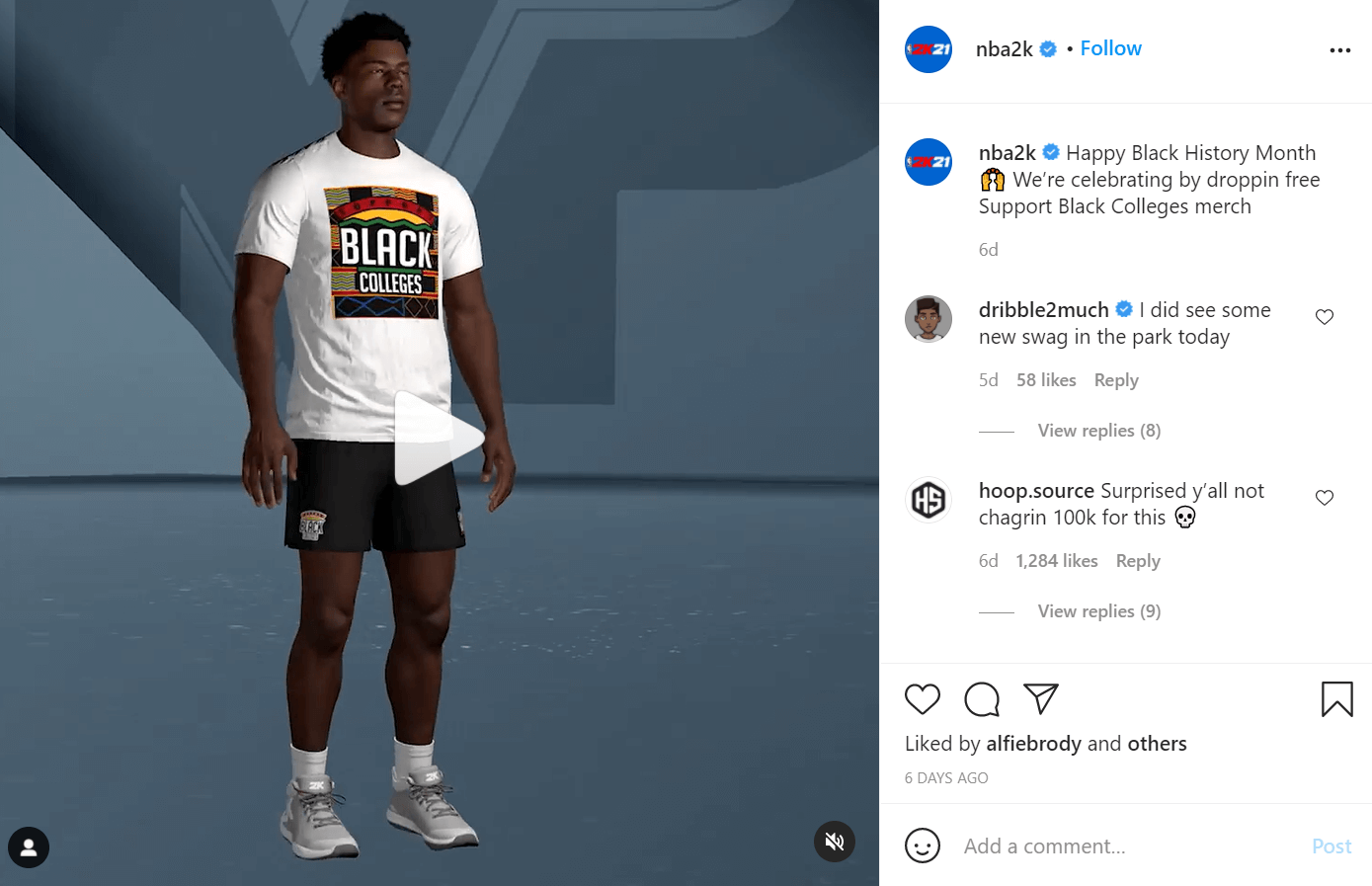
Fantasy sports also present opportunities for collaboration between sports organizations and the gaming industry as a way to keep fans attention. Fantasy sports can also help promote TV games and in-person attendance.
Formula 1 marketing team continuously promotes its ”F1 Fantasy Team” and the “Virtual Grand Prix” streams on social media, drawing fans’ attention and inviting them to compete against some of their top professional drivers.
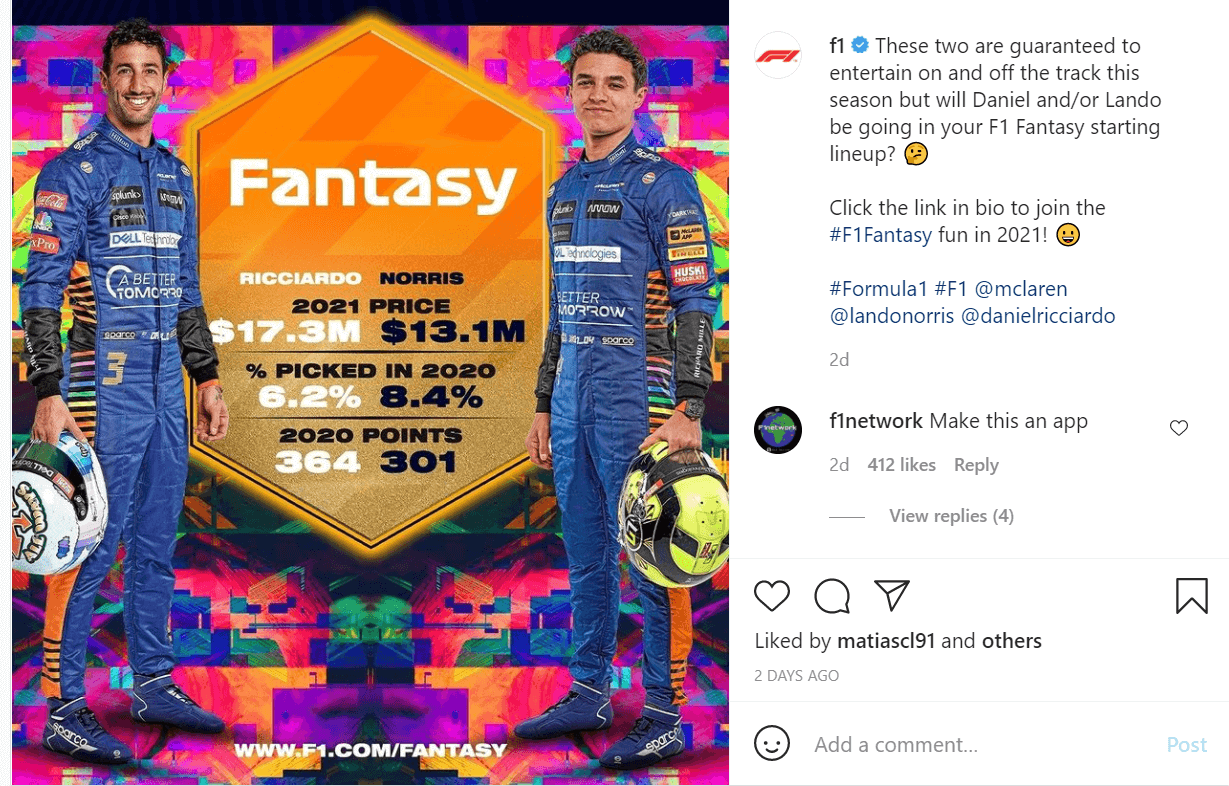

These platforms can help organizations get a feeling of fans’ sentiment and connect in ways that generate better experiences and new sources of engagement.
Sports have the amazing ability to create unity and connection between people that create communities, not to mention they’re a lot of fun. Faced with the unparalleled challenges of 2020, many sports teams put their leadership qualities into work and found new ways to win- the game on the field and the game for fans’ attention. Their efforts created new opportunities and increased the demand for authentic and versatile content.
Implementing these 7 marketing trends in 2022, will give any sports and entertainment brand the advantage in communication with users and help stand apart from the competitors.




